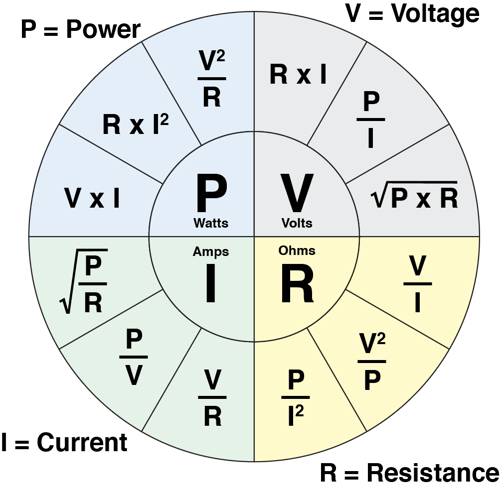Calculating Voltage Drop
Posted on 11/15/21 4:12 PM
Calculating Voltage Drop is Critical in the Application of your Electrical design.

Using longer cord lengths in your electrical design may become problematic enough to pose potential dangers. When cable length is 50 feet or longer, voltage drop in cable occurs—the resistance in the copper measured per foot—causing heat buildup.
With cord length beyond 50 feet, the heat buildup due to voltage drop can melt the cord and subsequently cause an electrical fire. UL testing confirms this, and thus derates current rating for cords of 50 feet or longer.
Let’s say you calculate for voltage drop and discover you are slightly over the 5% drop limit required by NEC Rule 210.19, as well as the CSA requirement. UL 817 requires cord sets to be derated after 50 feet and 100 feet to minimize potential overheating issues. Also prudent would be checking the requirements of the safety agencies which cover the countries you’re exporting equipment to which have long cords. By exceeding the 50-foot cord assembly, you could unintentionally put an employee’s safety at risk or create a potential fire hazard—and damage equipment you’re using or exporting.
“The loss of power to equipment reduces the voltage and overall power available to the equipment,” said Dan Ford, Technical Support Specialist at Interpower. “If too much voltage is lost, the equipment may not function correctly or may not work at all. For some equipment, such as devices that employ compressors, large motors, or pumps, even a small loss of voltage may cause a problem.”
Interpower’s Policy in Calculating Voltage Drop
Interpower’s policy is to calculate voltage drop for requested long cord assemblies and notify the customer of any potential issues if the voltage drop could be over 5%.
“In those cases,” Ford said, “we will let the customer know our findings which are calculated at a full rated load and ask for details regarding their application’s voltage and current usage. We will then recalculate. If there is still an issue, we can assist the customer in trying to decrease the voltage drop by suggesting alternate, larger cable sizes where possible.
“Increasing cable size or decreasing length are the only two options for decreasing voltage drop. In cases where the voltage drop is too severe—in excess of 8%—Interpower reserves the right to refuse manufacture of such items due to safety concerns.”
Voltage drops may cause lights to flicker or appliances to overheat—the load works harder with less voltage pushing it through. As a general rule, voltage drop should never exceed 5%. This is done by selecting the right size of wire, and by taking care in the use of extension cords and similar components. Heat buildup in a wire or cable can damage insulation
“The type of damage can range from a degradation (breakdown) of the insulation material to a softening of the material, which could result in tearing if the cable or wire is bent or moved,” Ford said, “or outright melting of the insulation and exposure of the conductor wire beneath. Regardless, this reduces the life of the wire or cable and can lead to other safety issues. Excessive heat build-up can also degrade the conductor material and result in an increase in resistance, which compounds the issue, causing more voltage drop and more heat.”
The material and size of the wire are also important. Copper is a better conductor than aluminum and offers less voltage drop than aluminum for a given length and wire size. The higher the voltage, the more electrons that can be sent flowing through the wire. And larger wire sizes (those with a greater diameter) will have less voltage drop than smaller wire sizes of the same length. In American wire gauge, every 6-gauge increase in wire size gives a doubling of the wire diameter, and every 3-gauge increase in wire size doubles the wire cross sectional area.
| Wire Diameter Comparison | Wire Cross Section Comparison |
|---|---|
 |
 |
Using Manual Calculation or the Voltage Drop Calculator
In order to manually calculate voltage drop, one must first obtain the expected direct current resistance from the applicable standard, or measure the resistance through the length of cable. Standards supply this information in ohms/km and sometimes ohms/1000ft. If taking a value from the standards, the value given must be converted/reduced to ohms/ft. For North American cable, Tables 5 and 6 in UL 62 should be used to obtain the value. For international cable types, such as H05VV-F, “IEC 60228 Table 1” should be used. These numbers will not give exact voltage drop numbers, but will be close enough to identify potential issues.

Once the ohms/ft. of a cable size is known, one must multiply this value by the length of the assembly in feet. This gives the total expected resistance for that assembly. Then it’s a matter of applying Ohm’s Law: multiply the resistance value of the assembly by the steady state current to get the voltage drop (if the current is going to fluctuate a lot based on parts of the application shutting on and off, use the highest value). One can then use this value with the mains voltage value to determine the remaining voltage and percentage loss.


Topics: electrical safety, voltage drop, product design, designing for export, power cord





